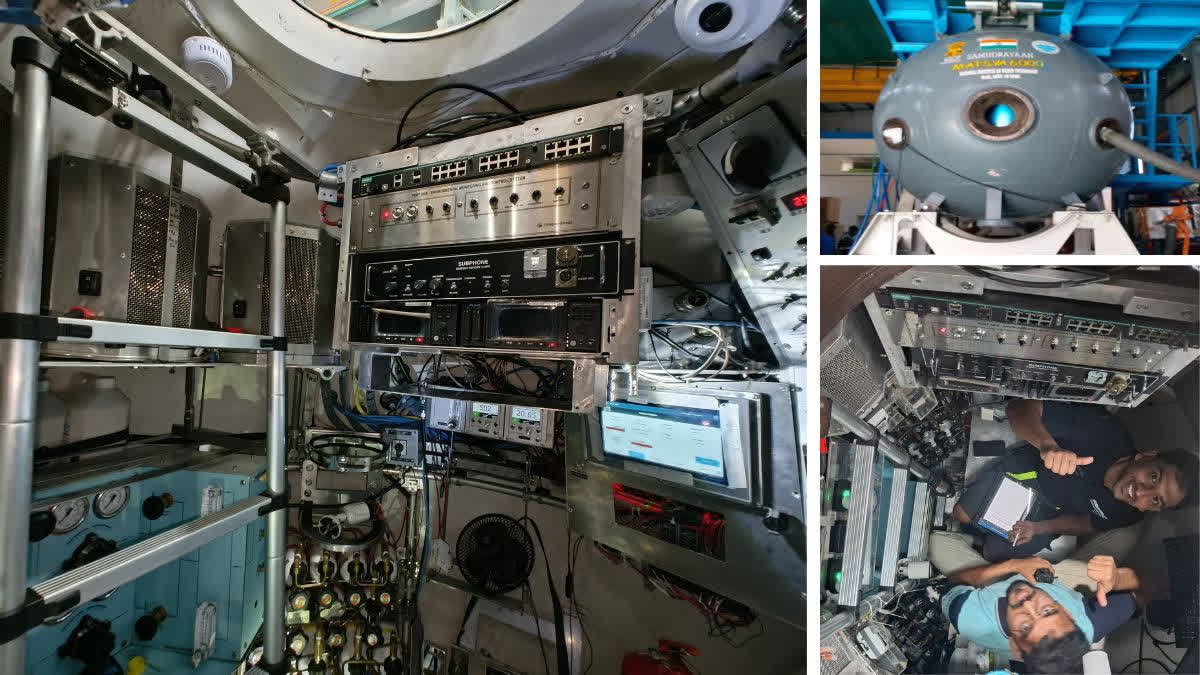Hyderabad: The National Institute of Ocean Technology (NIOT) has achieved a significant milestone in developing the MATSYA 6000, an indigenous human submersible. They successfully completed the Factory Acceptance Test for the Human Support and Safety System (HS3) within the submersible's crew module, which has an internal diameter of 2.1 metres.
The HS3 system is designed to support three people for up to 12 hours under normal conditions and up to 96 hours in emergencies. It includes features like a controlled oxygen injection system, carbon dioxide removal mechanism, sensors, control hardware, fire surveillance, extinguishers, and more.
In a series of posts on X (formerly known as Twitter), the Chennai-based autonomous organisation National Institute of Ocean Technology said that the complete system was custom-designed with the help of the OEM Unique Group and commissioned in the presence of certification agency DNV Marine surveyor.
As a critical milestone in the indigenous efforts of the human submersible MATSYA 6000 realisation, the Factory Acceptance Test of the Human Support and Safety System (HS3) inside Crew module sphere of 2.1 m internal diameter was successfully completed.#MATYSA6000… pic.twitter.com/9O3loB6SK1
— MoES NIOT (@MoesNiot) October 26, 2024
Back in February 2024, the NIOT showcased the MATSYA 6000 vehicle, developed under India's Samudrayaan project, at the NIOT campus in Pallikaranai, Chennai. The purpose of this vehicle is to conduct deep-sea exploration, particularly for rare minerals.
The submersible is around 6.6 metres long, weighs 210 tons, and is designed to reach depths of up to 6,000 meters. It aims to allow researchers to study the deep-sea environment, including chemosynthetic biodiversity and hydrothermal vents.
HS3 shall support three human beings for the normal submersible endurance of 12 hours and during an emergency for 96 hours with a controlled oxygen injection system, carbon-di-oxide removal mechanism, sensors, control hardware, fire surveillance, extinguisher, etc. The complete… pic.twitter.com/vytwWeW5I5
— MoES NIOT (@MoesNiot) October 26, 2024
The MATSYA 6000 is a titanium, sphere-shaped submersible designed for 48-hour underwater research. It features viewing ports, manipulators, a mineral sample tray, and cameras. A former naval officer will train two NIOT scientists to pilot it. The Samudrayaan project aims to start full-scale research by 2026.
The Samudrayaan project is likely to gain momentum this year itself and a target has been set to carry out full-scale research by 2026.
Read More
Chennai: NIOT to Hold Harbour Trial under Samudrayaan Mission Soon



